It had been my friend and coworker, Stefanie, who first put the Taiwan Hwadzan video-making job on my radar before I ever went to Taiwan. Stefanie and I had previously worked together at a video remote interpretation company in the medical industry. In between sessions with patients and providers, I would ask her questions in the Mandarin team Slack chat like, “How do you interpret the heart condition, right bundle branch block?” She was always super helpful and patient in answering my many questions. Stefanie was an integral contributor to all of the video projects I had worked on for Hwadzan, translating all of the scripts into Chinese.
Although Stefanie and I had known each other for about a year and had chatted frequently, the first time we ever met in person was at the UNESCO peace conference in Paris I had attended few months prior. Our very first meeting was at Charles de Gaulle Airport in Paris. Stefanie waved excitedly as I walked out of arrivals. She was tall, almost six feet, and turned out to be one of the most chatty people I had ever met.
After the conference, the group I had come to Paris with spent a few days traveling around France and Paris. From Rouen, to Honfleur, Étretat to Mont Saint-Michel, on the bus and along the cobbled lanes of Normandy, Stefanie and I chatted constantly. She had immigrated to the US many years ago, and now lived in Florida with her husband and daughter. She taught me a lot about the teachings of Pure Land Buddhism, and our conversations frequently wandered into interpreting and dating.
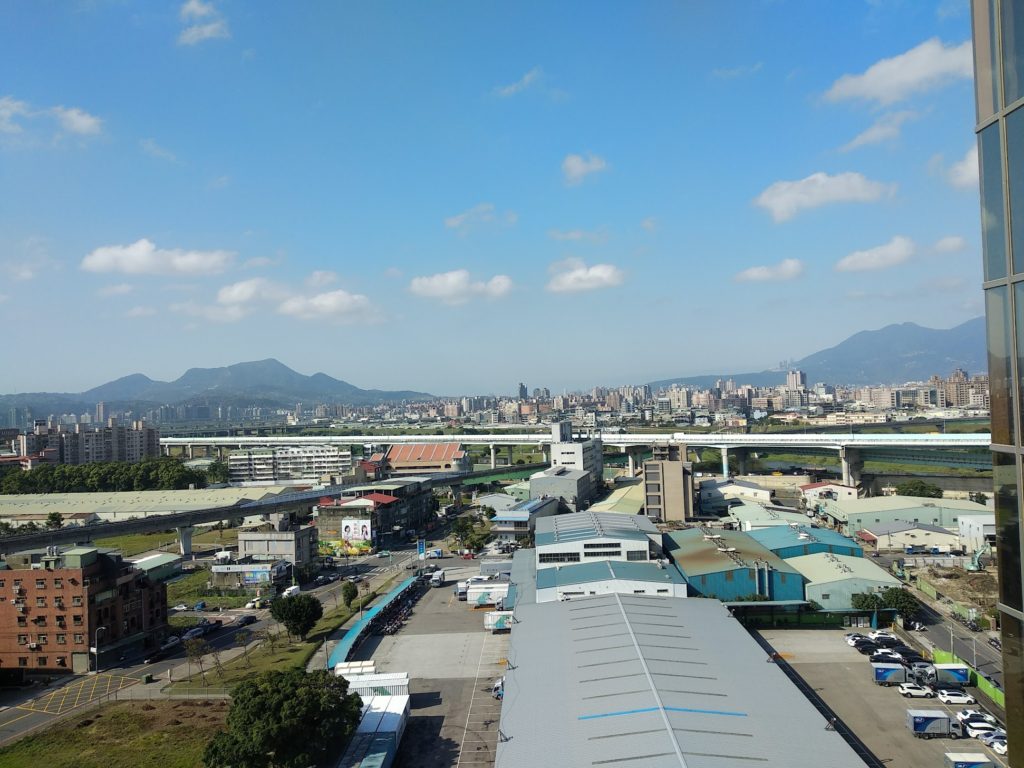 View from Akasa office to the north towards the sea
View from Akasa office to the north towards the sea
At the tail end of our exploration, myself, Stefanie, and some members of the group were taking a break at some tables on the top floor of a department store in Paris while others from the group shopped. Up walked a Chinese woman in her mid-forties with a tray of pastries from the store’s cafe, and sat down with her mother, Jinhuan, one of the member’s of our group. Yitsen had a well-to-do air of elegance that reminded me of my grandma. Later, Stefanie gave her the nickname Gege which was a title for a princess during the Manchu Qing dynasty. She was originally from Taiwan, but now lived in United Kingdom where she and her husband David owned and ran a PC components company called Akasa. She had taken the train from England to Paris to visit her mother and bumped into us.
Soon, Yitsen and Stefanie were engrossed in conversation. I listened as they discussed the peace conference and the various Pure Land societies. Like Hwadzan, there were other Pure Land societies set up around the world, and each of them took Master Chin Kung as their primary teacher. Stefanie mentioned that I was making videos about Chinese culture for Hwadzan and had written a book about living and working in China. After chatting for an hour or two, we went our separate ways. The next day, I bid farewell to Stefanie and our group returned to Taipei.
When my plan to work for Hwadzan fell through, Stefanie sent me many job postings for other Buddhist Pure Land societies around Taiwan and online translation work. Evidently, one day Stefanie called Yitsen and told her how my plans to work at Hwadzan had fallen through, but that I still wanted to stay in Taiwan. Yitsen said, “He can work at Akasa!” And so Yitsen and her husband David, offered to let me join their company as a copywriter and product video producer.
Akasa Thermal Solution
Yitsen, who had a strong interest in philosophy, later told me that when she was choosing a name for the company, one of the potential names was akasha, a Sanskrit word meaning space, sky, or ether in traditional Indian cosmology. She liked the name and it was slightly tweaked to make Akasa.
One rainy day in February, I met Yitsen’s mom, Jinhuan, also known as Ama (a Chinese word for grandmother), at Taipei’s main train station. She was going to take me to visit the Akasa Tapei office and then to Yitsen and David’s empty Taipei apartment. As part of their work offer to me, they were going to let me stay there free of charge.
This was the first time I’d seen Ama since the conference four months earlier. Ama looks like a kind, old grandma, but as I would come to learn, was as tough as nails and very independent. In the summers she would fly to UK to visit Yitsen and their family, and in the winter she would hang out in Chiayi, a city in southern Taiwan, working in her sizable garden.
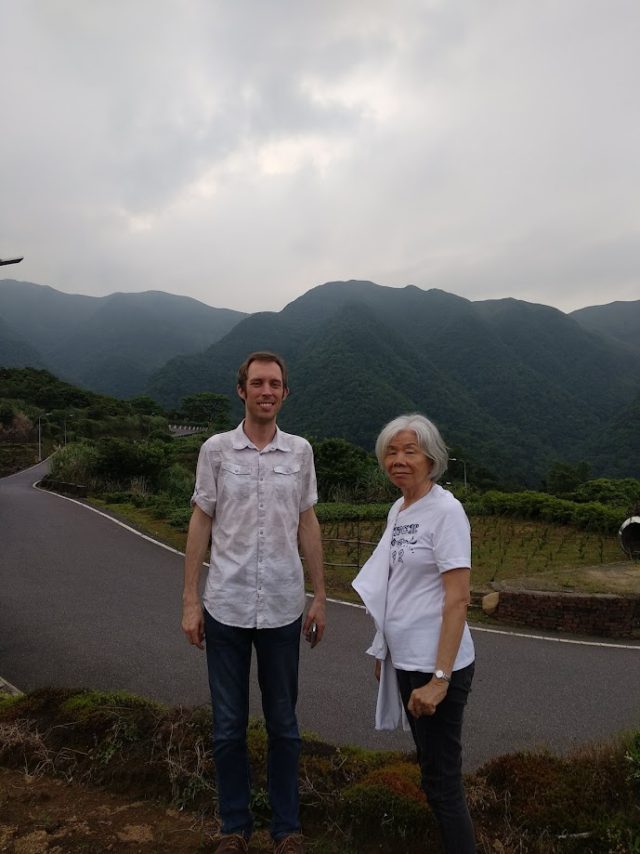
Me and Ama standing in a field
The Akasa office was a ten-minute bus ride from Taipei Main Station, in Sanchong district. Upon arrival we took the elevator up to the 13th floor. I was introduced to the team, which consisted of about 15 people: a few sales, engineering, and design staff, and several back office people. They were all warm and friendly. They didn’t have a general manager or HR person; Akasa ran a bare bones crew. Apparently the company had been one of the leaders in the industry ten years ago, but they had slowly scaled things back, which puzzled me.
After meeting the team, I was given a quick tour of the office by one of the veteran employees, Richie, a tall Taiwanese guy. Richie was quiet and had a soft-spoken sense of style as evidenced from his fashionable shoes and well-fitting clothes. Richie showed me to the studio, where products were photographed for use in designing the packaging and product web pages. As a product video producer, I would use the area for shooting videos.
After the tour, I had a look around the office. From the conference room, to the north, one could see all the way to the sea, and to the east, to Taipei. Along one shelf next to the window, sat several motherboards and small aluminum PC cases: products in various stages of the design and manufacturing process. I inspected the company’s products hanging in boxes on racks in one of the hallways: an HDMI to DisplayPort adapter, a black PC fan, a power supply. There was nothing too special about any of the products from my point of view, I was amazed that these simple PC components were enough to sustain an enterprise of 50-100 employees spread out over three continents. After all, Akasa was not manufacturing the components themselves, but instead sourcing the products from factories in China and then selling them, primarily in Europe.
Xinzhuang Apartment
After touring Akasa, Ama took me to see the apartment I would be staying in if I accepted the offer. It was a three-bedroom apartment with a kitchen, dining area, living room, and two bathrooms: plenty of space for a single guy like me.
However, I would have an occasional roommate. Apparently at one point, Yitsen said to Ama, “Go live with Nick.” Half of the time I was at the apartment, Ama would take the train up from Chiayi, where she spent most of her time, to stay with me.
Xinzhuang was about thirty minutes away from Taipei by bus, so it was not as convenient for trips into the city. But it was a free place to stay and close to Akasa, so I quickly decided that it would be a better place to live than my current living situation, as much as I liked my roommates and living near the center of Taipei. I decided to move in right away and try working at Akasa for a few weeks and see how things went.
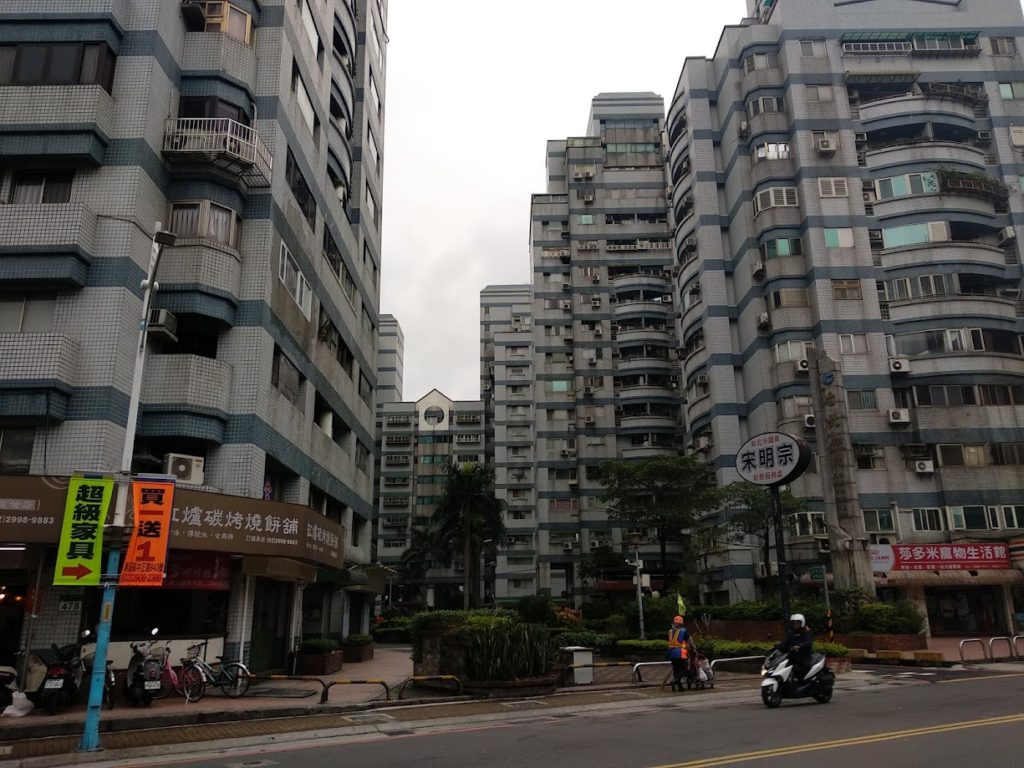
Drab apartment complex which I would call home for almost two years.
My First Days at Akasa
Akasa is a computer hardware company, selling cases, CPU coolers, fans, cables, and adapters. Some of the more well-known companies in this industry are Cooler Master (another Taiwanese company) and Corsair. At the time I began working for Akasa, one of their best selling products was their fanless mini PC cases for small-form-factor computers. Small-form-factor refers to the size of the computer motherboard, which come in many different sizes. The largest of these is the ATX 12 x 9.6 inch board, and on the small end is the Intel NUC, a 4 x 4 inch board.
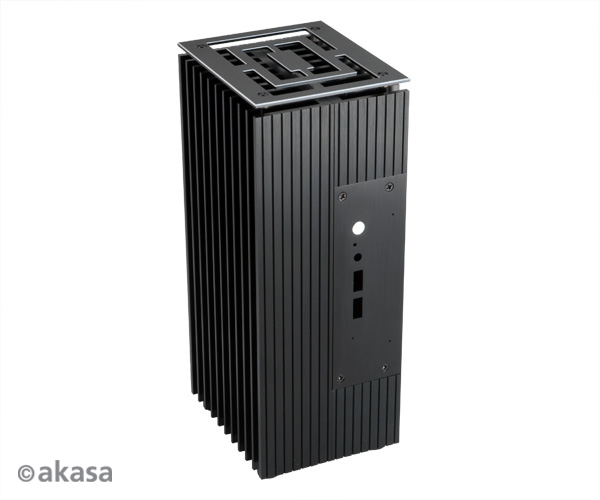
Akasa Turing computer case for Intel NUC. Source: Akasa.com.tw
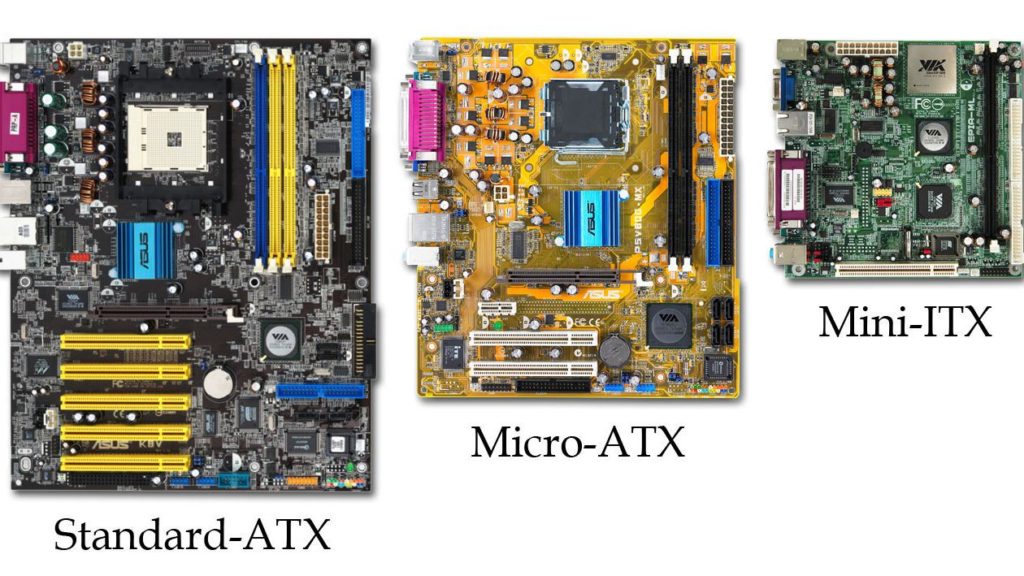
Various motherboard sizes. Source: Lifewire.com
On the first day at Akasa, I met two designers I would be working with a lot, Minka and Jiarong. Minka, the more senior of the two, was short, wore glasses, and had short hair. She was in charge of designing packaging. Jiarong was about my age, wore glasses, and was pretty. She had initially been hired as a front-end programmer, but because the company was short on graphic designers, she had to teach herself graphic design so that she could create the product web page content. As designers, product shoots fell to the two of them, and since I would be making product videos, they took me under their wing and showed me how to use the photography and video equipment the company owned.
“A-ni,” Minka would say to me, gesturing for me to take photos with the Nikon DSLR camera “this is how you use the camera. Now you try it.” In Chinese, “A” is a term of affection placed at the front of some nicknames. In Chinese “Nick” is said like “Ni-kuh,” so my name became A-ni. Minka had nicknames for pretty much everyone in the company. Jiarong was Jiajia (or just ++ when typed, since “jia” also means “to add”), the engineer Peter was A-Pee, and our colleague Ivan in the UK was simply I.
“A-ni, nice work, you xian xue xian mai.” Minka frequently spoke to me using the four-character Chinese idioms, chengyu. This one literally meant “now study, now sell” and meant “to learn and then use something on the spot.” Minka had an appreciation for Chinese culture and frequently taught me such phrases. Her toddler was enrolled in Chinese classics classes for kids, which I imagined to be something like Catechism classes.
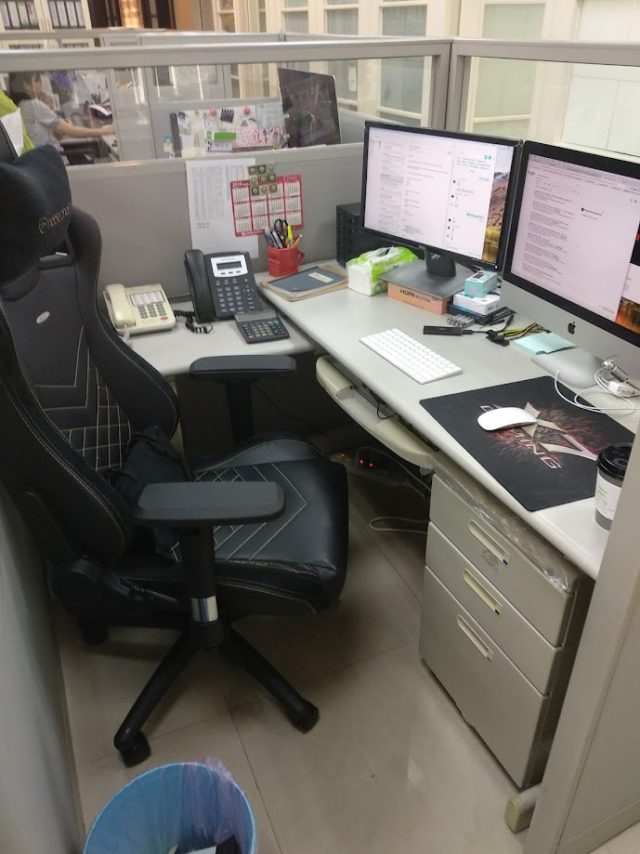
My desk
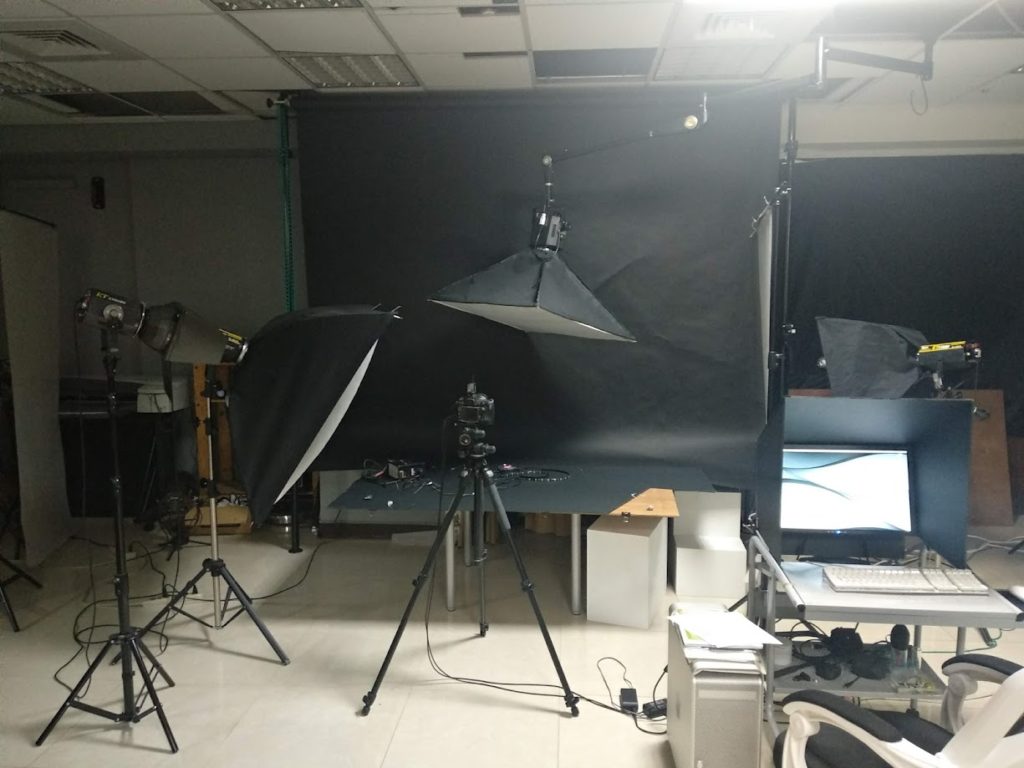
Akasa studio—where the magic happens
PC Parts Content Creation
My first product video project was to make a short video of the Vegas AR7 RGB cooling fan. RGB stands for red green blue and is a popular way for PC enthusiasts to add color to their “build” (DIY computer). Up until this point, all of the videos I had made were primarily narrative, documentary, or how-to in nature. This would be my first time creating a product video. Richie sent me some links to videos of competitor products I could imitate and I was off to the races. The head engineer at the company, Peter, helped prepare a PC fit with the Vegas AR7 coolings fans so that I could get some footage.
Footage in hand, I could now start the editing process. Simple YouTube searches returned lots of tutorials on how to create various transition effects. For the text overlays, I used Motion, companion visual effects software to Final Cut Pro for creating and animating text. Below is the final video.
One of the first products I ever wrote a description for was a power supply adapter cable. Bigger, more obvious parts, such as the case and fans, are like the heroes of the PC components world and lend themselves to more colorful copy. With products that are more behind-the-scenes, like cables, it is a bit harder to come up with something that will tug at a person’s emotions. These product descriptions ended up becoming more utilitarian in nature.
One of the first “hero products” I wrote a description for was for a Thunderbolt docking station, the Affinity TB3. Docking stations are basically hubs with multiple ports, such as for USB, HDMI, and VGA. They allow you to connect all of your peripheral devices, like a mouse, printer, and monitors, in one place. Some computers, such as the newer MacBooks, only have one or two USB ports, so a dock like the Affinity TB3 is necessary to plug in all your stuff.
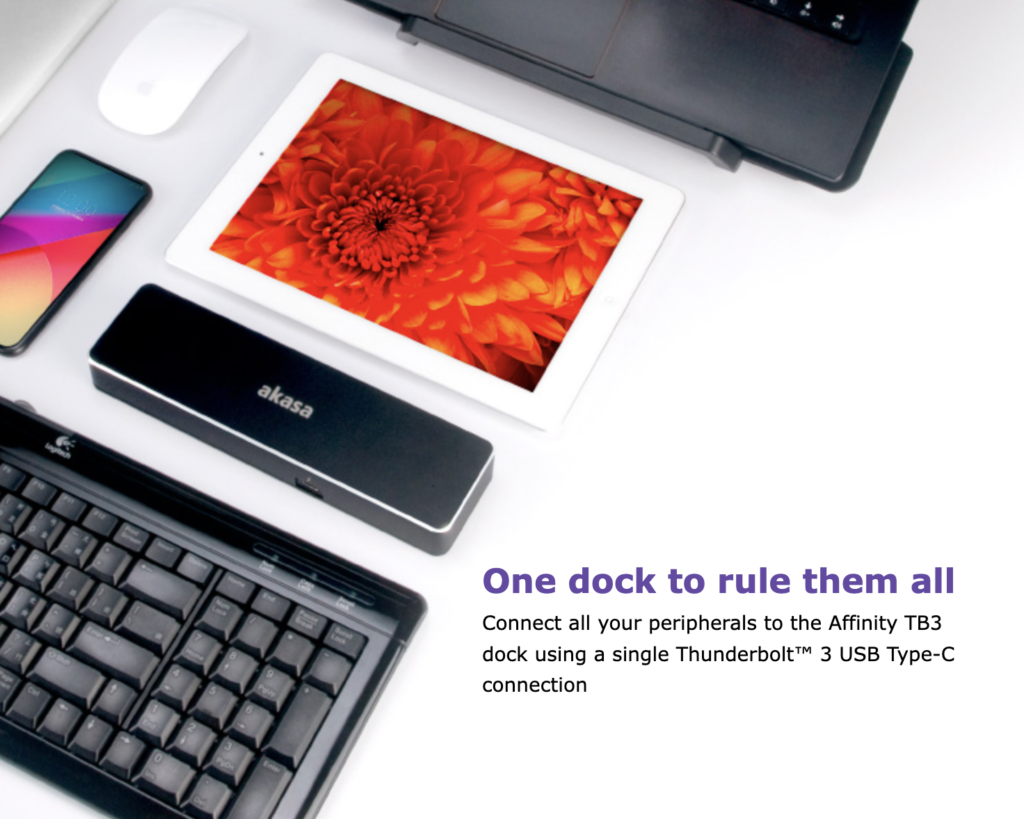
Akasa sourced in China a master dock, to control all peripherals. Source: Akasa.com.tw
Besides selling done by the sales team, I noticed that Akasa did not do too much marketing to promote their products after they had launched. So, in addition to writing product descriptions, I wrote press releases for some of the more exciting, newer products that were being released and sent them to various PC tech websites, like Tom’s Hardware (which never wrote about any of our products while I worked for Akasa…). Fortunately there were a slew of some of the smaller and medium-sized sites that would cover our products.
My last responsibility was to post to our social media sites on a regular basis. I was especially fond of one of my first Twitter posts, shown below.
When you see someone using Akasa addressable #RGB LED products in their system. #VegasAR7 #VegasMBA #Akasa pic.twitter.com/9ECmdS7kep
— Akasa (@akasa_tech) July 12, 2018
Meeting the Boss
After my first week or two at Akasa, the boss, David, came to Taipei for a business trip. He spent a few weeks in the Taiwan office every other month , so I saw him quite a bit. On our first meeting at the apartment, he enthusiastically shared with me a Chinese history book he had been reading. For someone in his mid sixties, he certainly had a lot of energy. I could tell he was very smart, and with his glasses and wisps of black hair, he reminded me of an inventor.
Originally from Hong Kong, he had attended college in Ireland and lived there for seventeen years. He sometimes joked that he was “half an Irishman.” Like me, in college he had majored in math, but also double majored in psychology. I imagined that mathematical mind helped him in designing new products, and the psychology knowledge helped him with selling. He also spoke several languages including Cantonese, Mandarin, Spanish, French, and English. Add to this his deep knowledge of computers, and he could be considered a Renaissance Man.
Although I admired David, there would be many social occasions filled with awkwardness and faux pas. On one occasion, I went with David and Ama to a Mother’s day dinner with three of their acquaintances. In Taiwan, much more so than in China, some people place a lot of emphasis on etiquette. At banquets, people are constantly filling up each other’s glasses of tea and offering each other food. To the untrained eye it could seem like just being polite. But there are actually a lot of rules underneath for how to serve one another, rules that even natives don’t completely know, let alone me.
At dinner, trying to be polite, I filled up the glass of one of the acquaintances, to which David responded with, “Don’t worry about me Nick, I’m fine.” Then later David got up to fill up everyone’s glasses with tea. When he poured my glass I was about to say, “Thanks” but he gave me a look like, “If you say ‘thank you’ I will murder you.” My Taiwanese friend later told me that saying thank you in such a situation would make it look like he was my servant.
On another occasion, I had made spaghetti for dinner. David and I were eating, when in walked his sister-in-law, Meirong, who lived in the same apartment complex and worked as an accountant at Akasa. I invited her to have some spaghetti too. But when I dished up some spaghetti, David responded to the action immediately. “It sure is hot in here,” he exclaimed loudly. What in the US are just little niceties have more significance for some people in Taiwan and China. I’m still not really sure what was wrong with this action.
Securing a Work Visa in Hong Kong
After working at Akasa part time for three months while I finished my Chinese classes at NTNU, Akasa helped me to secure a work visa. As part of the process, I needed to leave the country and obtain the work visa at a consulate outside of Taiwan. It just so happened that on trips back to the UK or to the Akasa factory in southern China, David would stop over in Hong Kong to visit his parents who still lived there. On one such trip, at the beginning of June 2018, I went with him to get my visa.
While we were waiting to go through security in Taipei, I bounced some ideas off him for our Twitter company description. He shared with me one of his ideas: “System too dark? We light it up. PC running hot? We cool it down.” He liked the contrasting “up-down” verses. I liked the description too and decided to use it.
Once we arrived in Hong Kong, we went straight to David’s parent’s house, where we would spend the night. Upon entering their house, I sensed a warm vibe. It reminded me of childhood visits to my own grandparents’ house. David’s mom showed me where I could wash my clothes and David set me up with a SIM card.
In the morning, David’s dad greeted me while doing exercises in the living room. He had a big smile on his face. David’s mom offered to fix breakfast at home, but we opted for a quick breakfast at a local diner. It was only 35 Hong Kong dollars ($5) for an English breakfast of toast, eggs, bacon, baked beans, and coffee. Quite a deal in the always-expensive Hong Kong.
After breakfast, we went downtown to the Taipei Economic and Cultural Office, near Admiralty station, on Hong Kong island. After handing in all the requisite documents, we took a walk around the area. “Whenever I visit Hong Kong I always like to head to the beach at least once,” David said. “Let’s take the bus to Stanley.”
A Trip to the Beach in Stanley
Stanley is a small seaside village on the south side of Hong Kong island. Dramatic hills cut across Hong Kong island from east to west separating the cosmopolitan city center on the north side from the ritzy beach towns on the south side. I knew Stanley quite well. While teaching English in China, I had spent many weeks in Hong Kong exploring everything this world-class city had to offer, and whenever I visited, I stayed in Stanley.
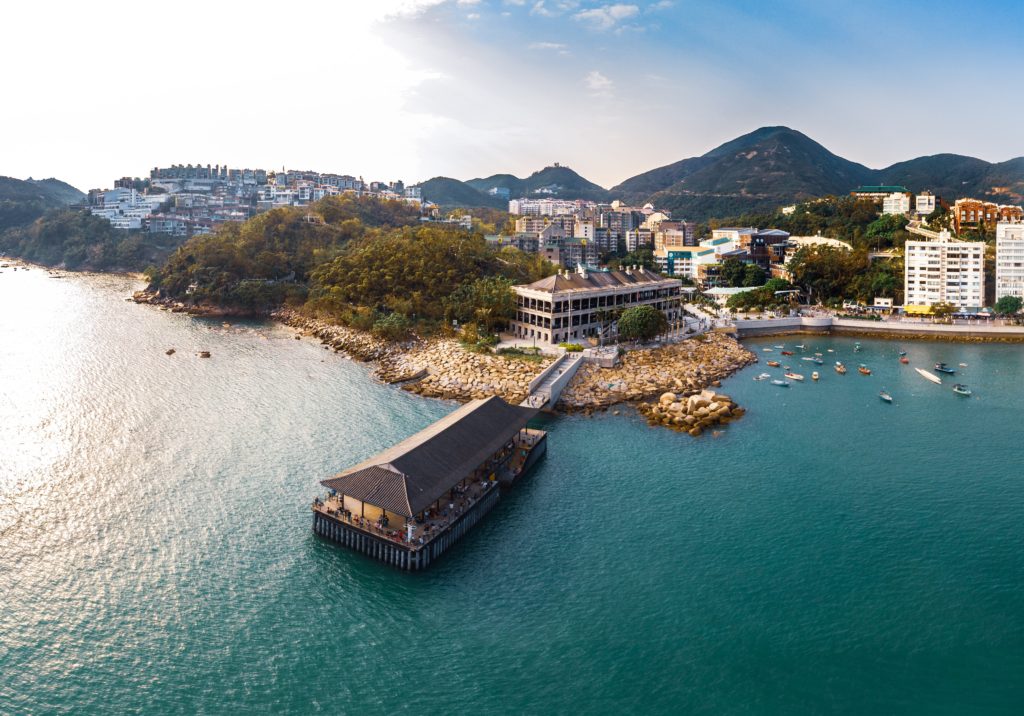
Stanley
The program I originally taught English through in China was called the Maryknoll Teach in China Service Project, and was run by the Maryknoll missionaries. They had the Maryknoll House (more like a manor or villa) perched on a hill in the middle of Stanley where they held retreats and other events, including English teacher orientations. Each year before heading to mainland China to teach, teachers gathered here to learn from other teachers on how best to educate college-aged Chinese minds. Staying at the house for these sessions was always a delight.
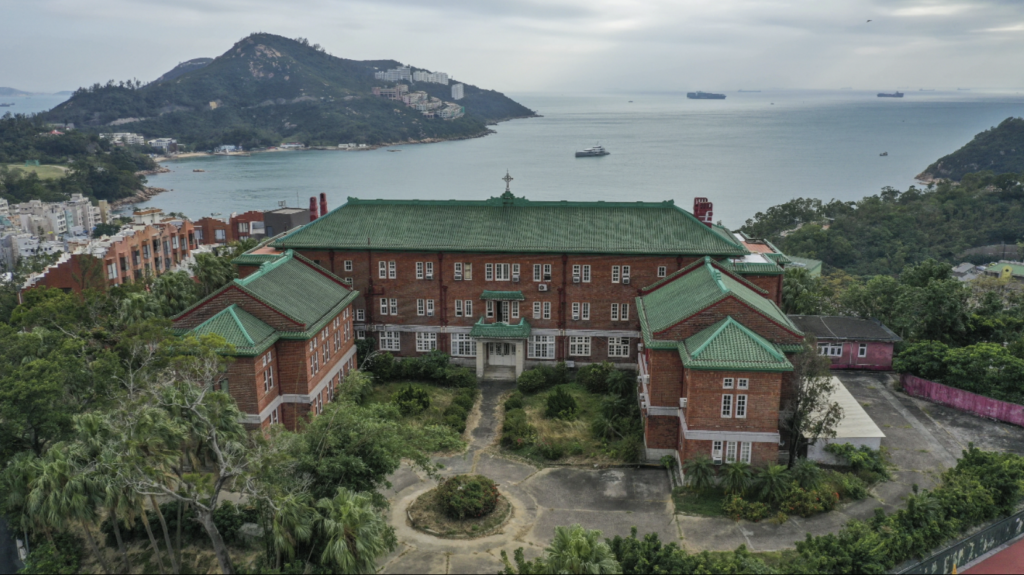
Maryknoll House. Source: South China Morning Post
As if this wasn’t enough affinity with Stanley already, my aunt, uncle, and two cousins had moved to Stanley for my uncle’s job just weeks before I had my first orientation at Maryknoll House. “Did you see Maryknoll House?” I had asked my aunt over the phone just after she had landed in Hong Kong. “Yeah, it’s right across the street.” The road leading up to the Maryknoll House was right across the street from their apartment.
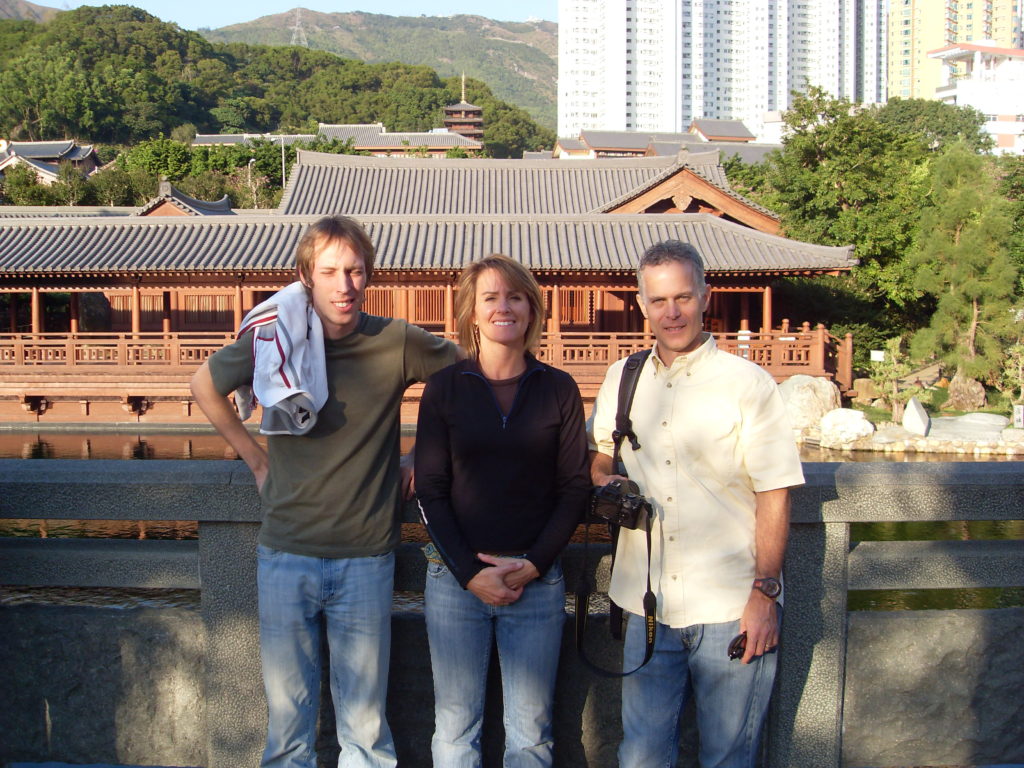
Exploring Hong Kong with my aunt and uncle circa 2008
Returning to Stanley with David was like a homecoming in a way. I had so many good memories there hanging out with my aunt, uncle, and cousins at their place or hiking the many nearby trails through the green hills. Maryknoll teachers used to always head down to Stanley’s main street a grab a brew at Smugglers Inn. I missed those days.
David and I found a small beach to take a rest at and enjoy the view of the South China Sea. “I’m really grateful for the opportunity to work for Akasa,” I said. “Sure, I hope you learn a lot. Maybe in a few years time, with your experience you will head back to US and find more interesting work,” said David.
Sitting on the beach talking with David, I finally realized why Akasa wasn’t a bigger company despite having so much room to grow. Their main goal wasn’t to get big and successful, it was to provide livelihood to its employees.
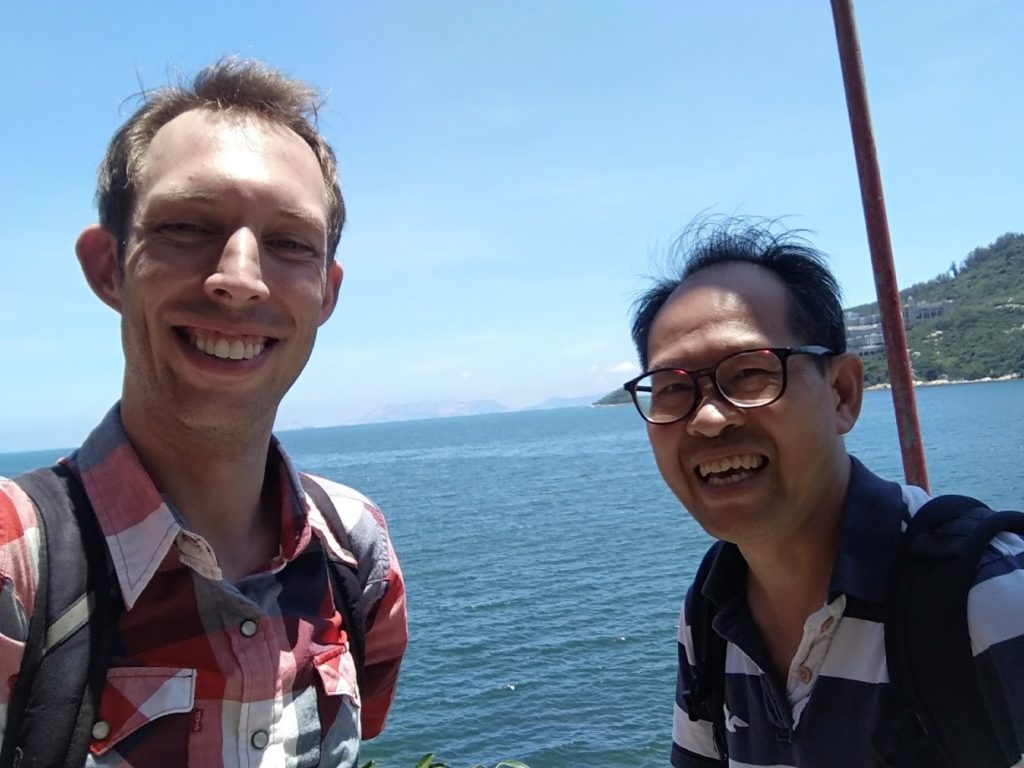
Hanging out with David in Stanley